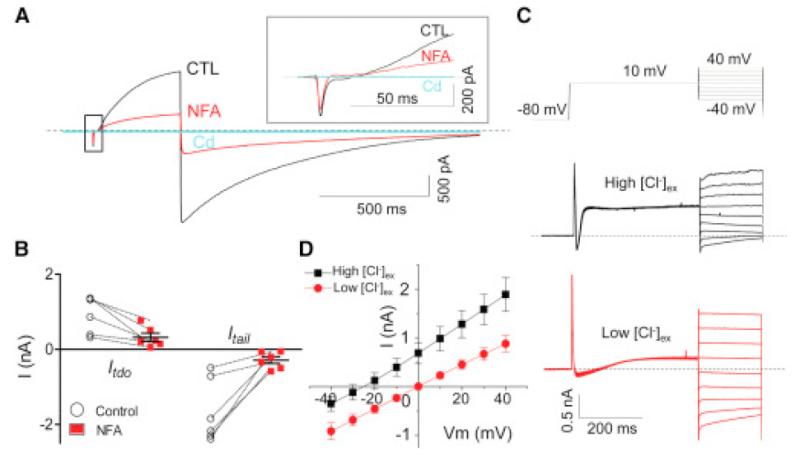
Inferior olivary (IO) neurons in the brain stem play an essential role in motor control by innervating cerebellar Purkinje cells through climbing fibers. The motor error and timing signals carried by climbing fiber impulses are determined by rhythmic and synchronized firing of IO neurons. It has been proposed since the 1980s that the interplay between the voltage-gated calcium channels and calcium-activated potassium channels is vital in establishing IO neuron rhythmicity and firing. Now, a project led by Dr. Yang Zhang and Dr. Zhushan Zhang from the Yang lab showed that IO neurons also highly expressed a calcium-activated chloride conductance (CaCC), which has been overlooked for more than three decades. After careful characterization, the research team identified that the newly discovered TMEM16B CaCC is responsible for this conductance. The opening of voltage-gated calcium channels activates chloride ion influx through TMEM16B channels, which in turn decreases membrane voltage and inhibits the voltage-gated calcium channels through a feedback mechanism. Genetic ablation of TMEM16B in mice results in dramatically reduced IO neuron firing and severe defects in cerebellar motor learning. This study will not only help understand the ionic basis of IO neuron excitability and motor control but also shine the light on the understanding of calcium-activated chloride channels in other excitable cells. The paper appears in the August 30th issue of Neuron.